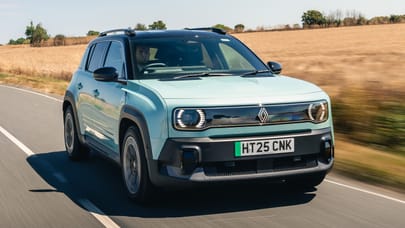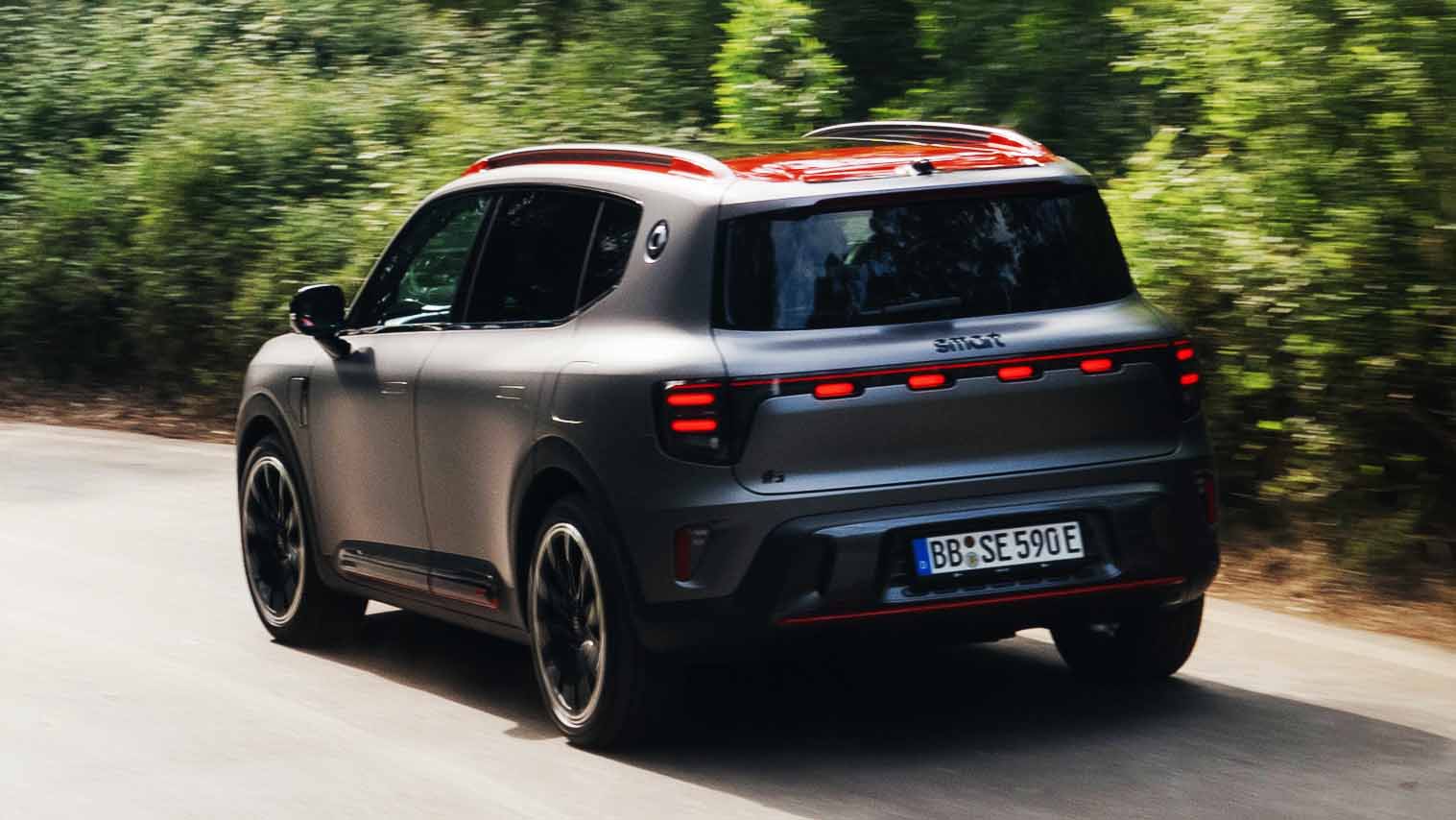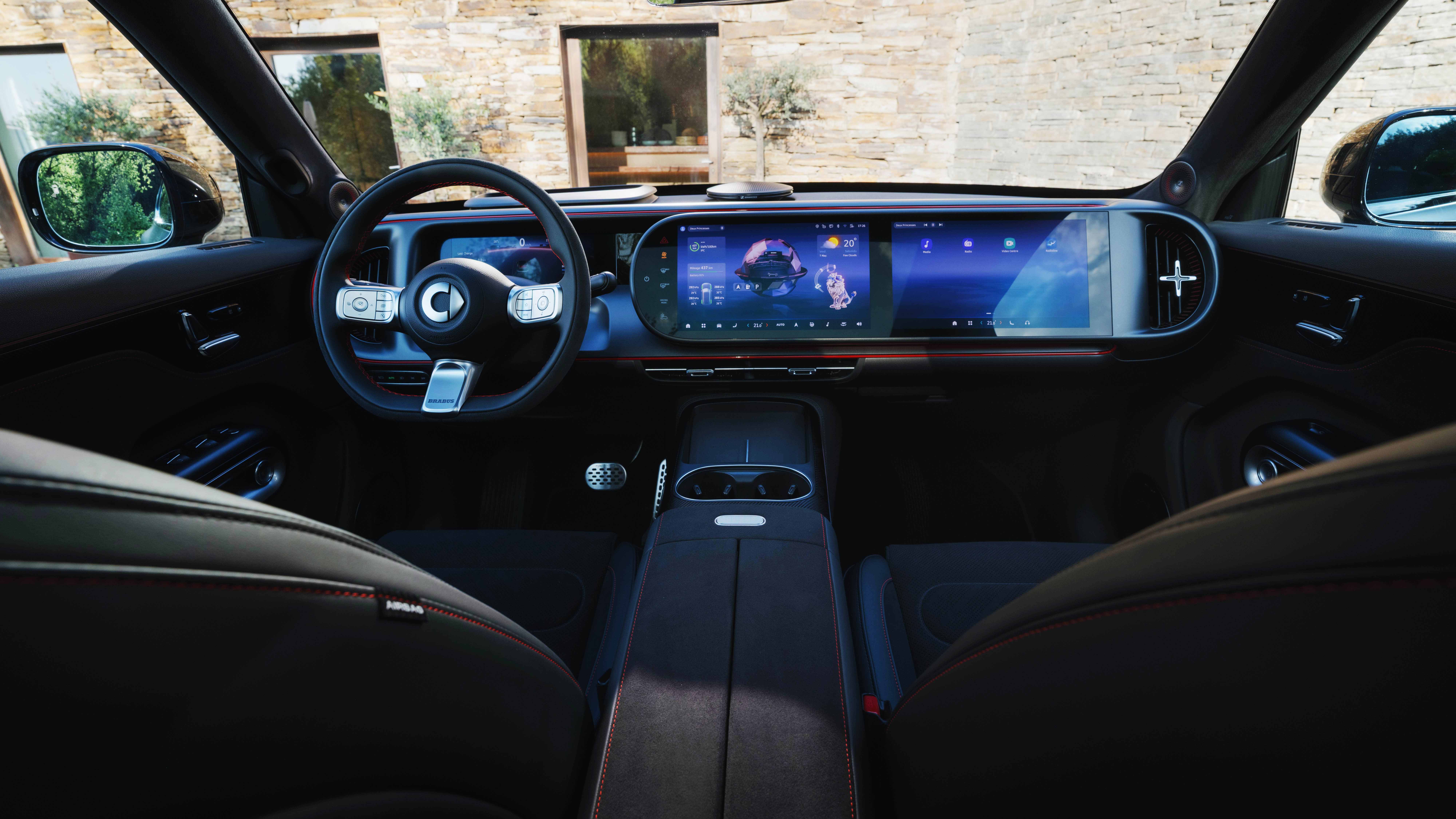
Smart #5 review
Driving
What is it like to drive?
Full disclosure, so far we’ve only been able to drive the alarmingly powerful Brabus variant. That’s not because TopGear.com won’t get out of bed for anything less than 600bhp, but because that’s the only car Smart provided for our first experience.
Is it fast, then?
Well, it has just 14 fewer brake horsepowers than a Ferrari Enzo, so yes, you could describe it as ‘sprightly’ if you were prone to bouts of massive understatement.
The #5 Brabus will do 0-62mph in 3.8 seconds and will get to its top speed of 130mph fairly soon after that. It has 524lb ft of instantly available torque and it’s the on-the-move acceleration that shocks you if you deign to press your big toe towards the floor.
Can it cope with all of that power?
Well, we’d absolutely argue that 637bhp is excessive in an electric family SUV. Keep the #5 in its Eco or Comfort modes and it actually decouples the front motor to become rear-wheel drive with around half the power. And yet, it’s still more than quick enough in these modes and gives us a good sense that the long-range, single motor versions will be the ones to have.
In the Brabus, if you use full-throttle and hit the kickdown the front motor is rudely awoken from its slumber and you’re effectively punched in the forehead by a surge of extra torque and acceleration. It’s actually not very pleasant.
This is not to say the Smart can’t cope with its clout. In fact, much like the #1, it’s actually a lot better to drive than you might expect. Here the suspension (which isn’t even specially tuned for the Brabus) is firmer than in the One which limits body roll and controls the 2,378kg kerbweight well, but it’s also well-damped so the #5 doesn’t crash about on poor quality roads.
There’s a slight sense that it’s crushing the road into submission with its sheer heft, but all remains rather calm in the cabin even if you really throw it into a corner with the ESC slackened to its sport setting. If you care, that Goldilocks setting is a good way to reduce the #5’s tendency to understeer without switching all of the safety systems off completely.
The brake pedal and steering both have a bit more weight to them than you might expect too. Okay, neither provides a huge amount of feedback but at least the feel is reassuring. This is one of the only cars with adjustable steering weight where we’ve left it in its lightest setting. In its heaviest form you might be forgiven for thinking you’d accidentally plonked yourself behind the wheel of an old Peterbilt with no power steering.
How’s the refinement?
Impressive. All Fives are fitted with double glazing, and you feel isolated from the elements inside while being provided with a good view out. Road and wind noise are well suppressed despite the boxy shape, and generally it feels very well engineered and set up.
Has it been designed to go off-road at all?
Well, the #5 does have a number of off-road drive modes (Adaptive, Sand, Snow, Mud and Rock), but it’s unlikely you’ll be using those very often. There’s no adaptive suspension either so you can’t raise the ride height to add to the 197mm of ground clearance, but it should be able to cope with a grassy campsite or a stony track.
Any other modes or settings I need to know about?
There are many, many settings. Perhaps the most relevant to the Brabus are the four different options for fake engine noise. Although we say ‘engine noise’, only one replicates an old school internal combustion engine and that makes the #5 sound like an old flat-six racecar. The other three are all variations on the sci-fi sound from other EVs, and like in lots of others you’ll try each one out for a few minutes before switching it off entirely.
There’s the usual suite of active safety systems too, and Smart now includes a shortcut to set up your preferences and make it easier to switch everything off.
Surely it’s not very efficient if you’re using all 637bhp?
Over a 180-mile run in the #5 Brabus that incorporated twisty country roads, motorway and only a small amount of town driving, we saw an efficiency figure of just 2.3 miles per kWh, and that was in perfect weather conditions. Not great, but that’ll certainly improve with more stop-start city driving and less ‘testing’ of the 637bhp.
Featured

Trending this week
- Car Review
BMW iX3






